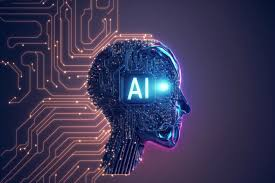Introduction to AI Tools Workflow
Artificial Intelligence (AI) has revolutionized the we approach various tasks, from automation to data analysis. In this blog post, we will delve into the world of AI tools workflow, exploring how these technologies streamline processes and enhance productivity. Let's embark on this fascinating journey together!
Understanding AI Tools Workflow
AI tools workflow refers to the sequence of steps involved in utilizing AI technologies to achieve specific objectives. These tools encompass a wide range of applications, including machine learning algorithms, natural language processing computer vision, and more. By incorporating AI into workflows, organizations can amplify efficiency, accuracy, and innovation.
Data Collection and Preparation
One of the initial steps in an AI tools workflow is data collection. This involves gathering relevant information from various sources, such as databases, sensors, or online platforms. The data must then be cleaned, organized, and preprocessed to ensure its quality and relevance for the AI algorithms.
* Data collection from diverse sources
* Cleaning and preprocessing data for accuracy
Model Development and Training
Once the data is ready, the next phase involves developing AI models tailored to the specific task at hand. This step includes selecting the appropriate algorithms, training the models on labeled data, and fine-tuning their parameters for optimal performance.
* Selecting suitable algorithms for the task
* Training and optimizing AI models
Deployment and Integration
After the models are trained and evaluated, they are ready to be deployed into production environments. This phase involves integrating AI tools into existing workflows, testing their functionality, and monitoring their performance in real-time.
* Integrating AI tools into workflows
* Monitoring and evaluating performance
Benefits of AI Tools Workflow
The implementation of AI tools workflow offers a myriad of benefits to organizations across industries. These advantages include enhanced efficiency, predictive analytics, automation of repetitive tasks, and the ability to extract valuable insights from large datasets.
Enhanced Efficiency and Productivity
By automating manual processes and streamlining workflows, AI tools enable organizations to operate more efficiently. Tasks that once required human intervention and hours of work can now be completed in a fraction of the time, freeing up employees to focus on more strategic initiatives.
Predictive Analytics and Insights
AI tools can analyze vast amounts of data to uncover patterns, trends, and valuable insights. By leveraging predictive analytics, organizations can make data-driven decisions, anticipate future trends, and gain a competitive edge in the market.
Automation of Repetitive Tasks
AI tools excel at performing repetitive tasks with speed and accuracy. This automation not only saves time but also reduces the risk of errors, ensuring consistent results across operations.
Extracting Insights from Large Datasets
In today's data-driven world, organizations are inundated with vast amounts of information. AI tools can sift through this data, extract relevant insights, and present actionable recommendations, empowering businesses to make informed decisions.
Conclusion
AI tools workflow represents a transformative force in the realm of technology, offering organizations a competitive edge, improved efficiency, and valuable insights. By understanding the intricacies of data collection, model development, and deployment, businesses can harness the power of AI to drive innovation and success. Embrace the potential of AI tools workflow and unlock a world of possibilities for your organization.




Comments
Post a Comment